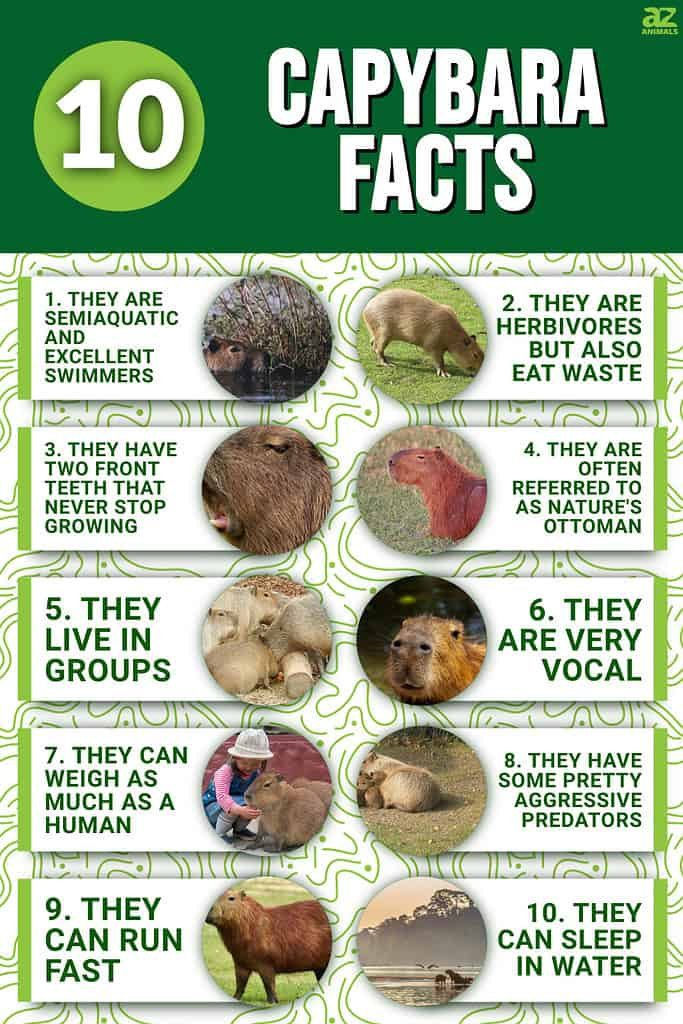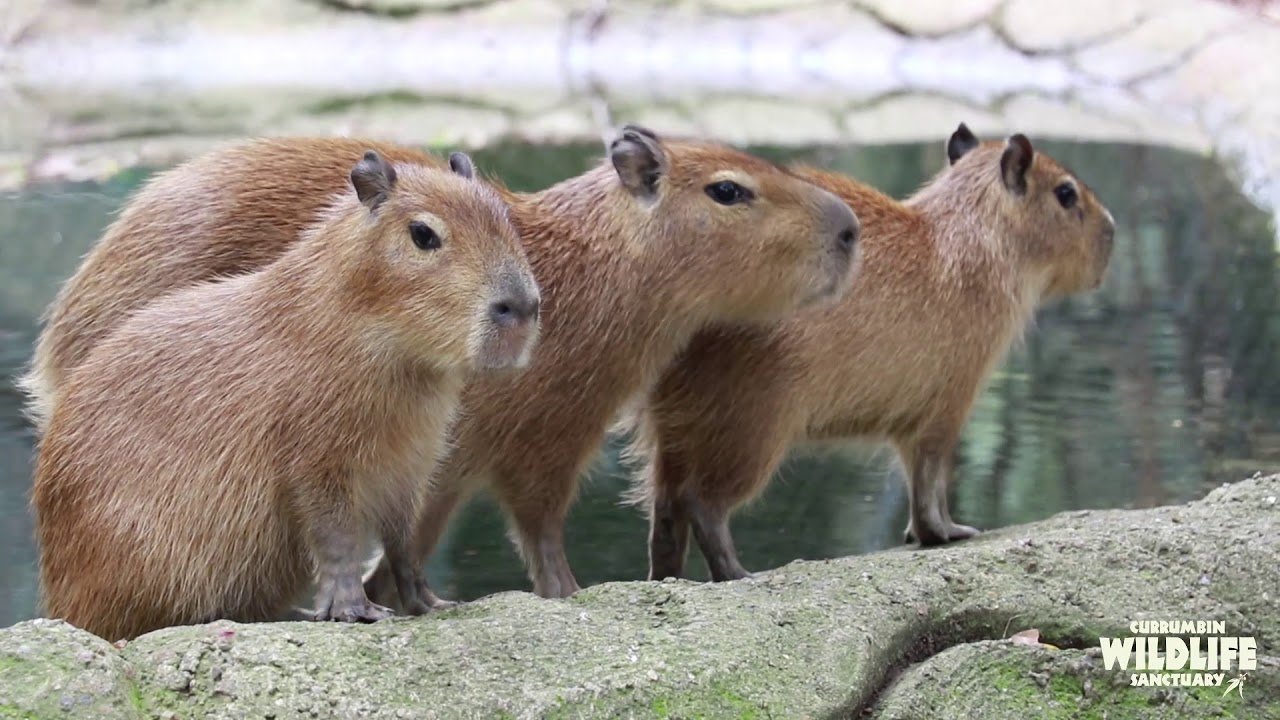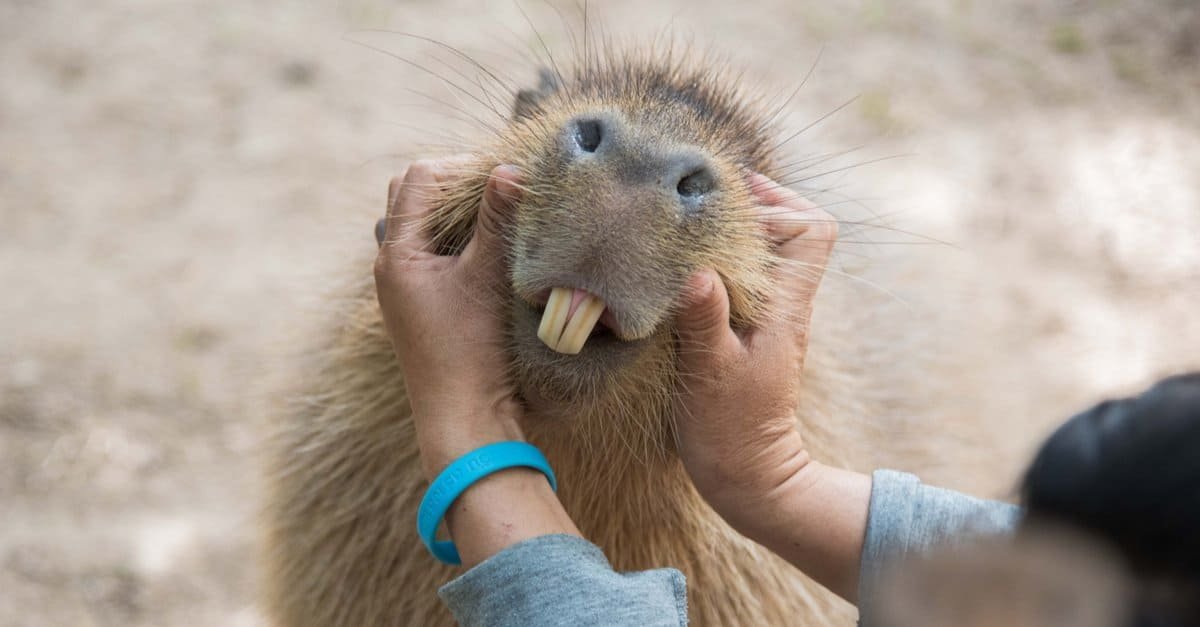Table of Contents
Capybaras, those adorable and sociable creatures, have some surprising preferences when it comes to their favorite things. From lounging around in mud baths to indulging in a feast of fresh fruits, these charming mammals have quite the diverse range of interests. In this article, we will take a closer look at the top ten things that capybaras just can’t resist, giving you a delightful glimpse into their world. So, get ready to be enchanted by the eccentric tastes of these fascinating creatures!

Eating
Grass and Plants
Capybaras are herbivorous animals and their diet primarily consists of grass and plants. They have a large appetite and enjoy grazing on various types of grasses, including both short and tall ones. Capybaras also love to munch on different kinds of plants such as leaves, herbs, and shrubs. They use their sharp incisors to efficiently graze on these greens, making sure to savor every bite.
Fruit and Vegetables
In addition to grass and plants, capybaras also have a taste for fruits and vegetables. They relish the juicy sweetness of fruits like watermelons, apples, and oranges. Crunchy vegetables such as carrots, lettuce, and cucumbers provide them with a refreshing and nutritious treat. Capybaras enjoy the vibrant flavors and textures of these fruits and vegetables, making them a pleasant addition to their diet.
Bark and Twigs
Capybaras have strong, sharp teeth that are perfectly adapted for gnawing on tougher food sources like bark and twigs. They will often strip the bark from trees, satisfying their physiological need to chew and keeping their constantly-growing teeth in check. Capybaras also find pleasure in nibbling on small twigs, fulfilling their natural instinct to explore and forage. This behavior not only provides them with mental and physical stimulation but also contributes to their overall dental health.
Aquatic Plants
Being semi-aquatic creatures, capybaras have a special affinity for aquatic plants. They are excellent swimmers and often venture into bodies of water to search for their next tasty meal. Aquatic plants such as water hyacinth, water lettuce, and duckweed are among their favorites. These plants offer a unique texture and taste that capybaras find particularly appealing, and they eagerly consume them while enjoying their time in the water.
Swimming and Bathing
In Water Bodies
Capybaras are known for their exceptional swimming abilities. They find great joy in frolicking in various water bodies, including rivers, ponds, and lakes. It is not uncommon to see them gracefully gliding through the water, using their paddle-like feet and their streamlined bodies to effortlessly navigate. Swimming not only provides capybaras with a way to cool off and escape the heat but also allows them to engage in social interactions with other members of their group.
Mud Baths
Another favorite activity of capybaras is taking mud baths. They revel in wallowing in muddy areas, covering their bodies in a thick layer of wet soil. This behavior serves multiple purposes for capybaras. Firstly, the mud acts as a natural sunscreen, protecting their sensitive skin from the sun’s harmful rays. Additionally, the mud serves as a cooling agent, allowing capybaras to regulate their body temperature more effectively. Lastly, the mud bath helps control parasites and skin irritation, keeping them clean and healthy.

Socializing
With Other Capybaras
Capybaras are highly social animals and form strong bonds within their groups. They enjoy spending time with other capybaras, engaging in various social interactions. This includes grooming each other, where they remove dirt and parasites from each other’s fur using their teeth and paws. Capybaras also engage in playful activities with their group members, such as chasing, wrestling, and vocalizing, which helps strengthen their social bonds and promotes a sense of belonging.
With Other Animals
While capybaras primarily socialize with their own species, they are generally friendly and amicable towards other animals. They often share their habitats with a diverse range of wildlife, including birds, turtles, and even larger mammals. Capybaras commonly interact with these animals peacefully, acknowledging their presence and remaining calm and non-threatening. This harmonious coexistence reflects the typically friendly and sociable nature of capybaras.
With Humans
Capybaras have a unique ability to develop a friendly rapport with humans. With their gentle demeanor and inquisitive nature, they often approach humans curiously and interact in a calm and friendly manner. Many people find joy in observing and interacting with capybaras, as they are known to appreciate gentle petting or a scratch behind the ears. Building a connection with a capybara can be an incredibly rewarding experience, as they have the capacity to form deep bonds with their human companions.
Grooming
Self-Grooming
Capybaras are meticulous about their personal hygiene and spend a considerable amount of time engaging in self-grooming activities. They use their dexterous front paws to carefully clean their fur, removing dirt, debris, and any parasites that may have settled on their bodies. Capybaras also use their teeth and tongue to delicately comb through their fur, ensuring it remains clean and well-maintained. Self-grooming helps capybaras maintain a healthy coat and contributes to their overall well-being.
Mutual Grooming
In addition to self-grooming, capybaras also engage in mutual grooming with members of their group. This behavior is a way for them to establish and strengthen social bonds while simultaneously providing grooming benefits. Capybaras use their teeth and paws to groom their companions, removing any dirt or parasites that may be present. Mutual grooming sessions create a sense of trust and camaraderie within the group, promoting a harmonious social structure among capybaras.

Sunbathing and Resting
Basking in the Sun
Capybaras are known to enjoy basking in the warm rays of the sun. They often seek out sunny spots, such as stretches of grass or exposed rocks, where they can soak up the sunlight. Sunbathing not only helps capybaras regulate their body temperature but also provides them with a sense of relaxation and comfort. They can often be seen sprawled out, lounging in the sunshine, enjoying a serene moment of tranquility.
Finding a Cozy Spot
When it comes to resting, capybaras seek out cozy and comfortable spots to lie down. Whether it’s a secluded patch of grass, a sandy bank near a water body, or a shady area under a tree, capybaras carefully choose their resting spots. They prefer locations that offer a sense of security and protection, allowing them to rest undisturbed. Finding a cozy spot enables capybaras to recharge their energy and prepare for their next adventure.
Exploring
New Environments
Capybaras have an inherent curiosity and a natural instinct to explore. They are constantly in search of new environments to discover and investigate. They eagerly venture into unfamiliar territories, whether it be a dense forest, a grassy meadow, or even a human-inhabited area. Exploring new environments allows capybaras to broaden their knowledge of their surroundings, find new sources of food, and establish new territories if needed.
Different Terrains
Capybaras are adaptable animals that thrive in a variety of terrains. From thick jungles to dry savannahs, they possess the ability to navigate diverse landscapes. Capybaras can traverse through tall grasses, maneuver over rocky terrain, and even swim across rivers and streams. Their versatile nature enables them to explore and thrive in different terrains, making them adaptable and resilient creatures.

Playing
With Toys
Capybaras have a playful side and enjoy interacting with toys. Whether it’s a rubber ball, a floating toy in the water, or a specially designed capybara toy, they find delight in engaging with these objects. Capybaras use their nimble paws and teeth to playfully manipulate and toss toys around. This playful behavior provides them with mental stimulation, physical exercise, and an outlet for their abundant energy.
Interacting with Objects
Capybaras also find entertainment in interacting with a wide range of objects within their environment. They may investigate fallen branches, curious about their texture and taste. Capybaras may also playfully nudge or roll objects such as logs or rocks, engaging in a simple form of play. These interactions with objects serve to keep capybaras mentally engaged and prevent boredom, further enhancing their overall well-being.
Digging and Burrowing
Creating Holes
Capybaras are proficient diggers and are known for their ability to create holes in the ground. They use their strong claws and robust limbs to dig out shallow depressions or small holes. These holes serve multiple purposes, including creating resting spots, avoiding extreme weather conditions, and even providing a quick escape route if they feel threatened. Digging also enables capybaras to search for moisture-rich soil, which helps them stay hydrated in dry environments.
Making Burrows
In addition to creating holes, capybaras have a particular affinity for making burrows. Burrows are more elaborate structures that provide capybaras with greater protection and shelter. These underground chambers are typically large enough to accommodate a group of capybaras and offer a safe place for them to rest, nest, and raise their young. Burrowing behavior is a vital aspect of capybaras’ natural habitat and contributes to their overall survival and well-being.

Chewing and Gnawing
Chewing on Wood
Capybaras have continuously growing teeth, and chewing on wood is essential for them to keep their teeth properly worn down. They have a natural instinct to gnaw on logs, branches, and other wooden objects. This behavior not only helps them maintain dental health but also provides mental stimulation and satisfies their innate desire to chew. Chewing on wood serves as a form of environmental enrichment, ensuring that capybaras have healthy teeth and a fulfilled lifestyle.
Nibbling on Objects
In addition to wood, capybaras also enjoy nibbling on various objects within their surroundings. They may softly chew on grass stems, leaves, or even non-edible items like rocks or shells. Nibbling on objects stimulates capybaras’ senses, providing them with sensory enrichment and helping to satisfy their chewing instincts. Capybaras carefully explore their environment, sampling different items they encounter, and this behavior contributes to their overall mental and physical well-being.
Being with Their Young
Nursing
Like many other mammals, capybaras nurse their young. After a gestation period of approximately 130-150 days, female capybaras give birth to a litter of pups. The mother capybara provides her offspring with nourishment through nursing. Capybara milk is rich in nutrients and essential for the growth and development of the young. Nursing establishes a strong bond between the mother and her offspring and ensures the survival and well-being of the capybara pups.
Caring for Offspring
Capybara mothers are highly attentive and devoted to caring for their offspring. They diligently protect, groom, and nurture their young, providing them with a safe and nurturing environment. The mother capybara guides her pups, teaching them important skills such as swimming and foraging. The mother-child bond is resilient, with capybara mothers staying close to their young until they are old enough to become independent. Caring for their offspring is a vital aspect of capybara life and showcases their remarkable parenting abilities.
In conclusion, capybaras are fascinating animals with diverse interests and behaviors. From their herbivorous diet to their love for swimming and sunbathing, capybaras find joy in various activities. They are social creatures, building connections with other capybaras, animals, and even humans. Grooming, exploring, playing, and caring for their young are all essential aspects of capybara life. These unique and endearing characteristics make capybaras a captivating species to observe and appreciate in their natural habitats.

